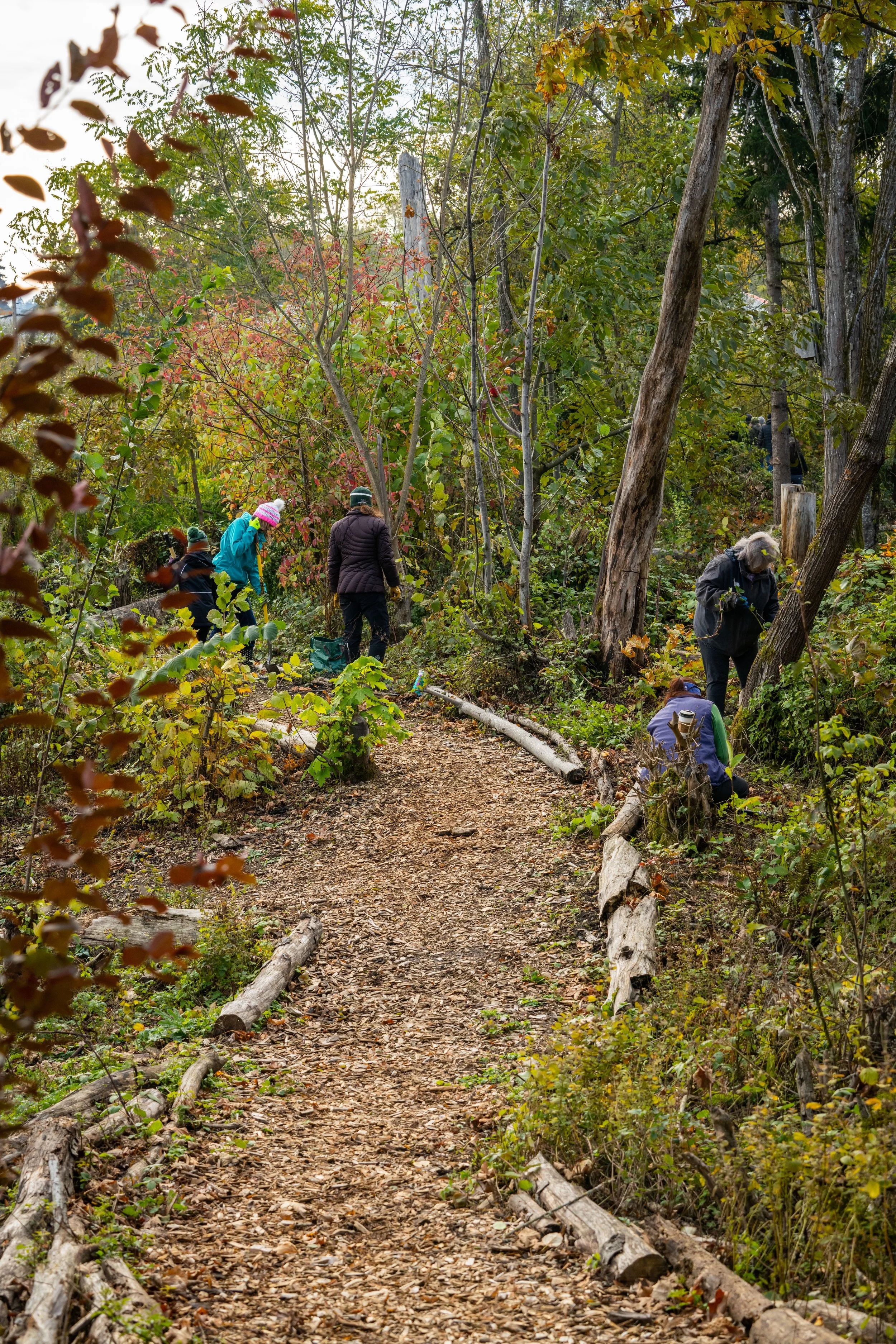Stewardship Days
Stewardship events focus on what we can offer the land. Urban wetlands in particular face pollution, isolation, and encroachment from every angle. Planting native, water-loving species like willow, dogwood, currant, snowberry, spirea, rushes, sedges, and shade-bearing trees can help attract pollinator species, feed native critters in the habitat, improve the soil’s integrity and water-filtration capacity, and keep water temperatures cool throughout the year. We plant November through February when trees and shrubs are dormant to ensure their highest possible rate of survival.
A volunteer tends to native plants at Minthorn Springs Wetlands in Milwaukie.
Photo Credit: Steven Mortinson
Cleaning up trash is another stewardship staple. Gravity and stormwater bring any kind of trash that floats or rolls downhill into the lowlands. So does illegal dumping. Keeping litter and debris out of the water system is essential for the well being of humans and wildlife alike. Cleanup events offer a rewarding sense of community and accomplishment for folks who don’t mind the heavy lifting. Plus we find some really cool stuff out there!
A volunteer cleaning up trash.
Photo Credit: Bruce Block
Trail maintenance and nonnative species management is the third type of volunteer event we host. Blackberry, teasel, holly, english ivy, clematis and other such plant types arrive in wetlands by water, wind, animals, or catching a ride on someone’s boot (or paw). Once these seeds find wetland soil, they can easily grow to outcompete natives and obstruct trails. Digging, pulling, cutting, and sometimes weaving this plant material helps to make wetlands more accessible for recreation, and gives native plants a boost to ensure wetland function.
Volunteers doing trail maintenance.
Photo Credit: Steven Mortinson



